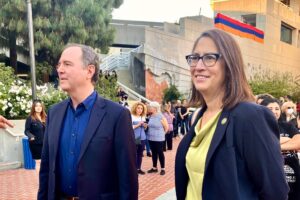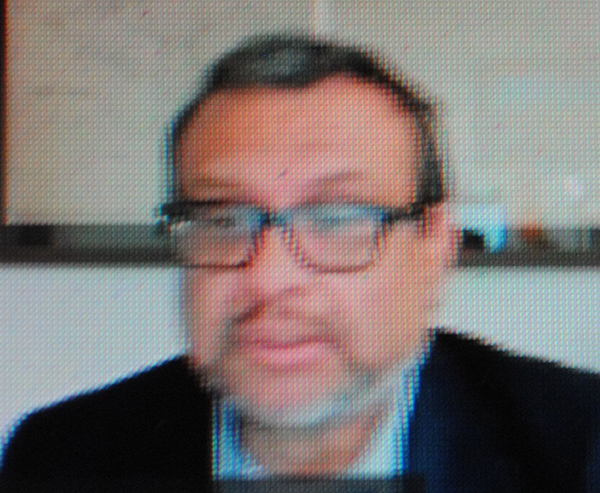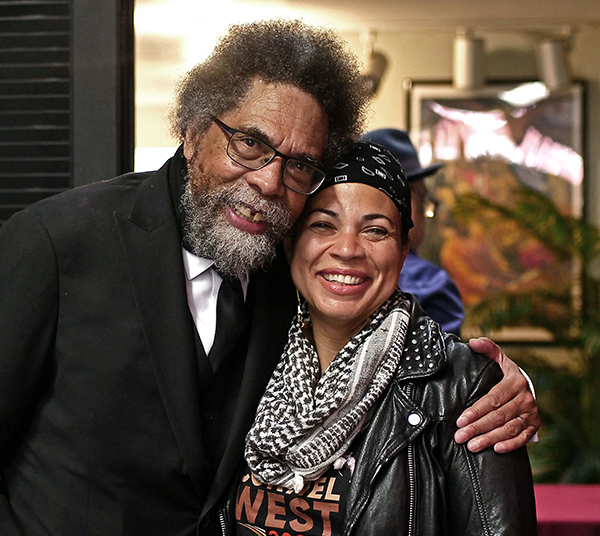By Alfredo Santana
Contributing Writer
VERNON — A panel of state and federal environmental representatives plus the trustee in charge of cleaning the former Exide battery recycling plant in Vernon from lead and other hazardous metals announced the job could be finished by year’s end, along with decontaminating 3,200 properties near the site.
The announcement was made during a Zoom gathering Jan. 14 to inform affected residents and stakeholders about cleanup work being conducted by the California Department of Toxic Substances Control in coordination with the federal Environmental Protection Agency.
During the two-hour presentation, several residents joined the webcast and dialed in to question the panelists why the state agency did not schedule additional sample rounds targeting homes excluded from cleanups compared to parcels that either will be cleaned or already were decontaminated.
They also expressed concern about underground water pollution at 75 feet below the facility’s perimeter, and raised doubts the former battery smelter can be of any commercial reuse if a nearby rendering plant keeps on releasing nauseating odors that engulf the industrial area.
Roberto Puga, a geologist who has worked for 23 years in environmental cleanups, has been named
the Vernon Environmental Response Trust (VERT) trustee last October by U.S. Bankruptcy Judge Christopher Sontchi, as part of Exide’s settlement to bail out from the plant’s control.
Puga is in charge of handling a $11.16 million trust fund opened to oversee the decontamination and deconstruction of the plant’s polluted buildings. He said three companies have been hired to do the cleaning, and a Canadian bank was chosen to hold the funds.
The clean-up firms are American Integrated Services, Almega Environmental and Alta Environmental. The Royal Bank of Canada is handling the cleanup trust fund.
“We have assumed control of all facility services from former owners,” and are current with municipal permits and regulations related to the plant’s cleanup and environmental work, Puga said.
Born and raised in Boyle Heights, Puga said the second of three cleanup phases recently resumed, and estimated the deconstruction of the battery smelter and an ancillary building would be finished by September.
Suhasimi Patel, the project manager with the state Department of Toxic Substances Control and director of the Exide’s cleanup program, said that $175.5 million out of the $251.1 million allocated by the state government to cleanup contaminated parcels within a 1.7-mile radius of the Exide plant had been spent as of December.
Patel said that 2,217 properties had been cleaned from lead, arsenic and other pollutants belched into the air by the battery plant during nearly 100 years of operation, with a cost of $68,000 per 25 tons of soil removed and replenished.
Of the total expenses, 87% went for soil cleanup and restoration, 8% to sample soil suspected of containing heavy metals, 4% for project quality and communications, and 1% for information technology.
“We project that 3,200 properties will be cleaned by December,” Patel said.
She said her agency is committed to speed up the clean-up projects and follow recommendations from an audit conducted in October that called for faster cleanups and accurate estimates to test and remove soil.
In december, the state sued former owners and operators of the Vernon facility to recover $136.5 million allocated to the cleanups, plus interests and legal fees, and asked a federal judge to setup a Superfund related to the case.
The working class neighborhoods of Boyle Heights, East Los Angeles, and the cities of Maywood, Huntington Park, Bell and Commerce received the brunt of toxic fumes from the Vernon’s facility, causing high levels of lead measured in homes, school grounds, child care centers and public parks.
Many residents and environmental activists have accused previous plant owners of dumping carcinogenic pollutants in the mostly Latino-inhabited communities and for worsening the quality of life.
In addition, local leaders and community organizations have questioned the cozy relationship state regulators had with the plant’s former operators, who obtained temporary permits from environmental agencies to recycle more than 11 million batteries each of the its last 30 years until the site was shuttered in 2015.
Hortensia Muñiz, a preliminary investigator with the Department of Toxic Substances Control, said that 8,556 properties have been sampled for dangerous metals, and 1,602 remain untested due to lack of access or difficulty to contact owners or tenants.
The missed properties would be sampled by the end of February, if work is coordinated with the Los Angeles County and the city of Los Angeles, Muñiz said.
Muñiz blamed the coronavirus pandemic for slowing the job and making it more difficult, forcing crews to wear protective equipment and disinfect working areas every day.
“Because COVID-19 does not stop at the end of the work, cleanup rounds are recommended to sanitize and cleanup work areas and tools,” Muñiz said.
However, Joe Gonzalez, a resident whose home abuts two other decontaminated properties in East Los Angeles, pointed to a “a pattern of deficiencies” allegedly chartered by the Department of Toxic Substances Control for failing to sample soil on his home and measure dangerous metals causing asthma, cancer and other diseases.
Gonzales tied the state agency to Exide’s lack of involvement to resolve the environmental mess the former owner created, and said a neighbor recently died of cancer following years of lead and arsenic exposure.
“Two neighbors’ homes and a church across the street were cleaned, but my house was not,” Gonzalez said. “We have to eliminate the thinking of Exide as an honest participant in the cleaning project.”
Patel responded that the agency’s criteria to test soil and schedule cleanups based on parcels with 80 parts per million is still in effect, but a lack of resources has raised the threshold to 300 parts per million.
Amanda Cruz, a physical scientist with the Environmental Protection Agency assigned to work on the VERT trust, said she is committed to work for the best interest of the community, and to be wise about spending limited resources in a mega-cleanup project.
“I will work every day to help provide a better health and future to this community,” Cruz said. “We need to make good decisions about how the [cleanup] money will be spent.”











